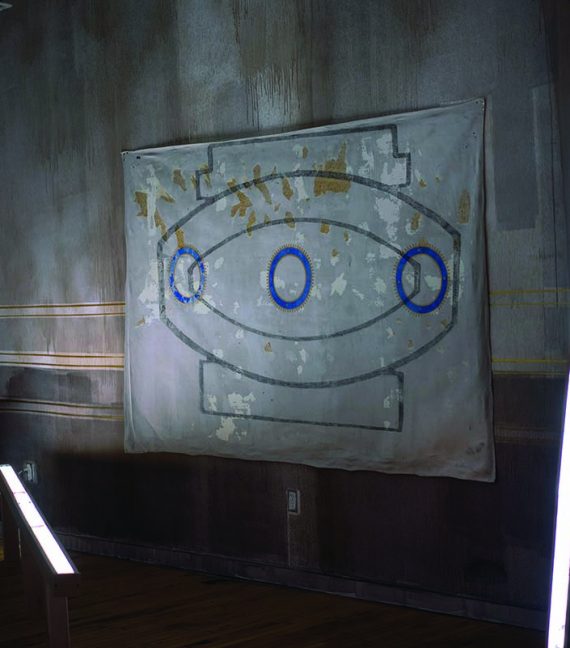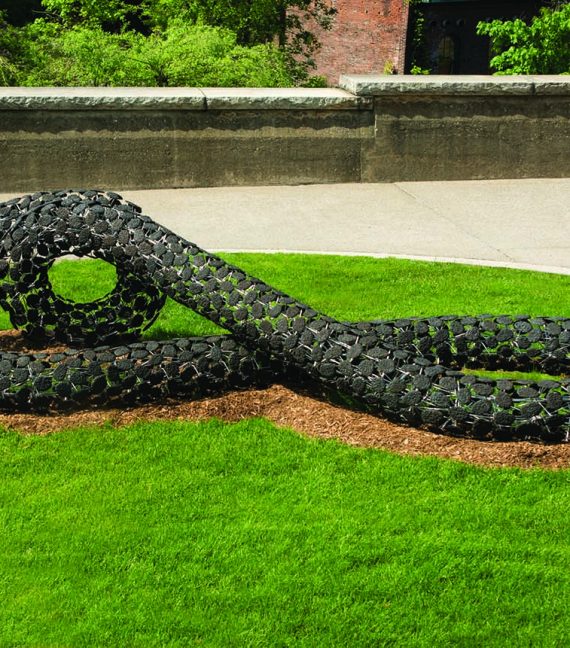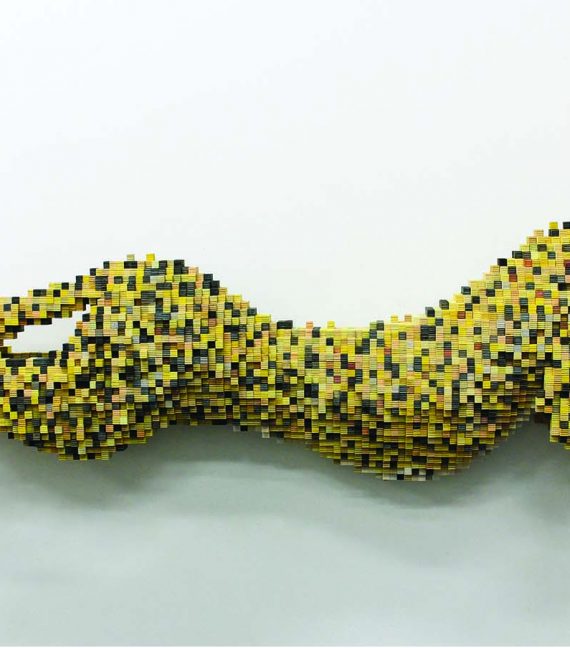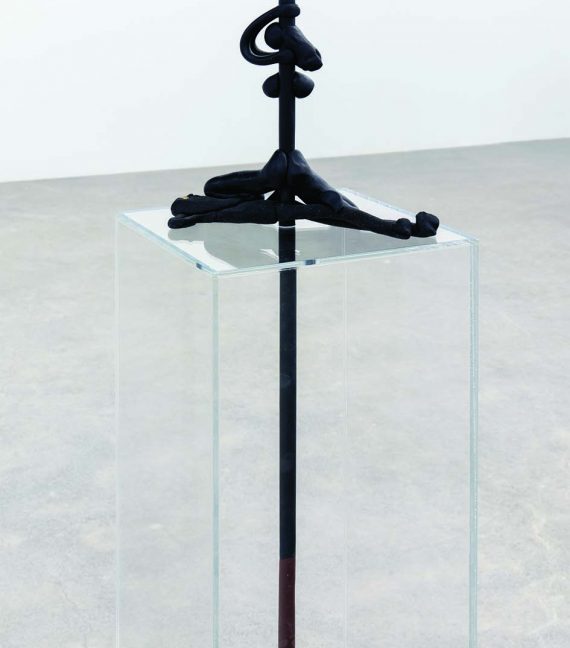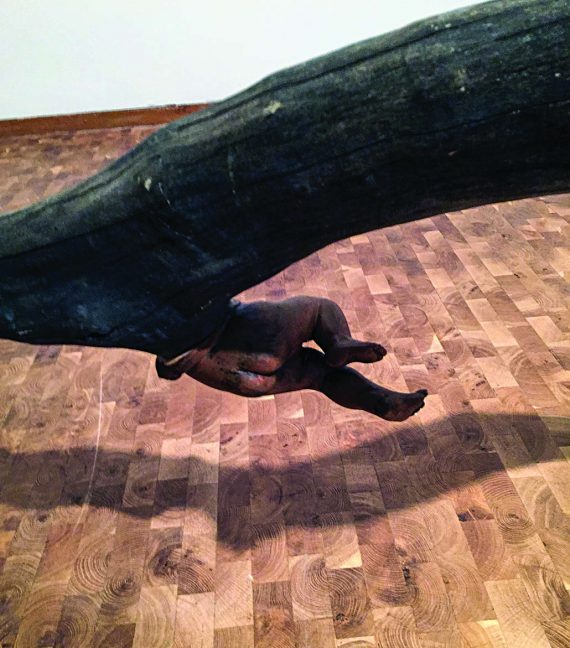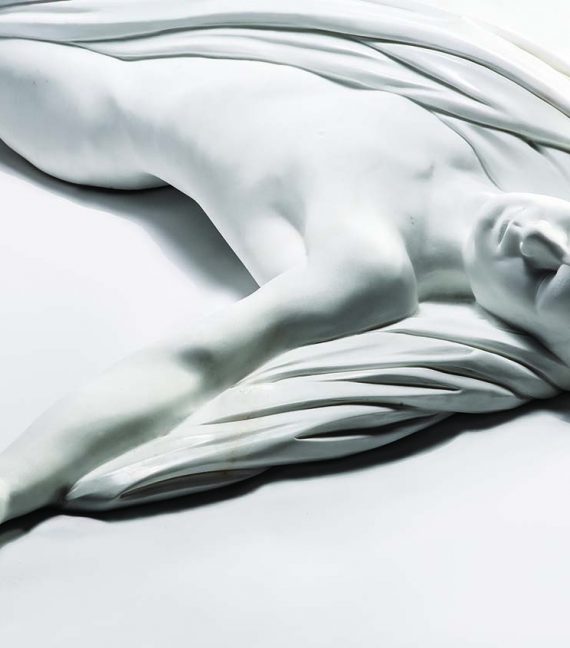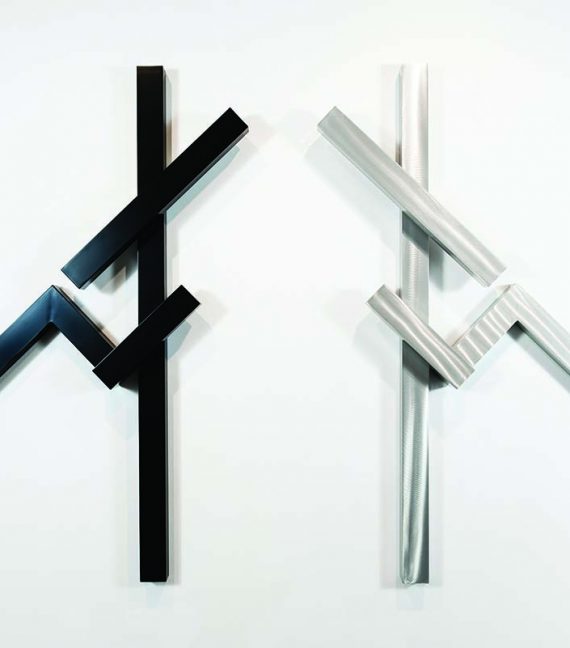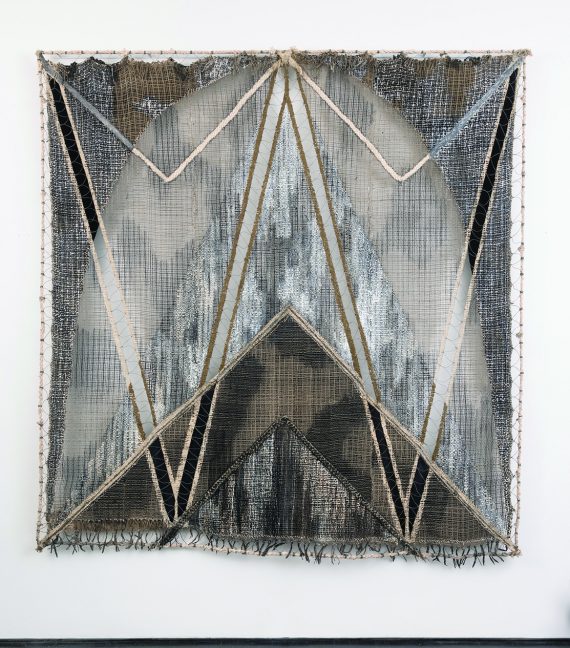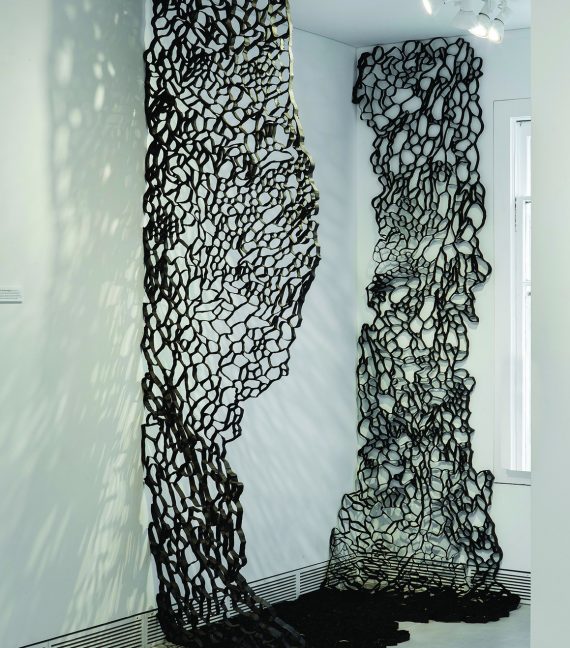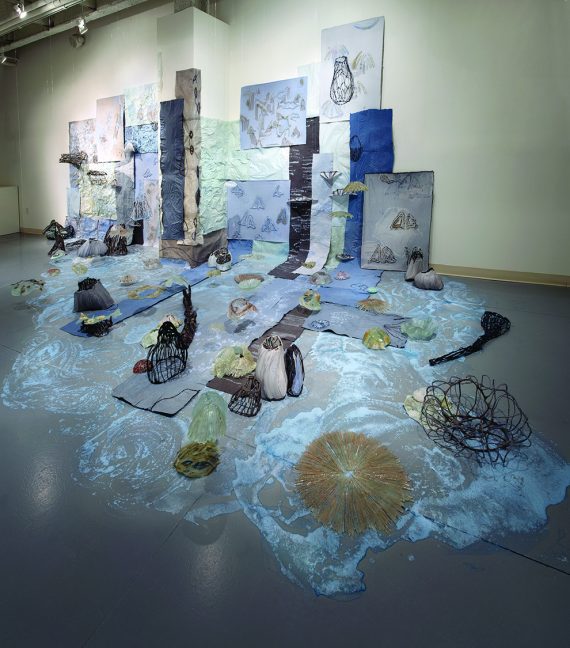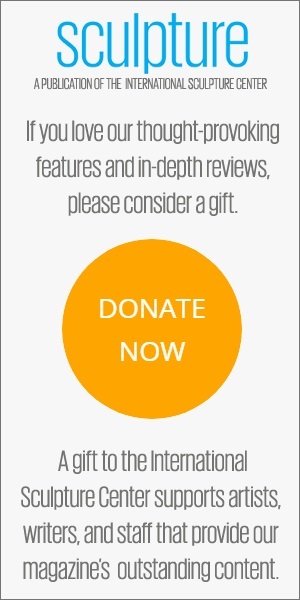SALT LAKE CITY CUAC Contemporary Art As presidential candidates muddle around in the public arena, failing to articulate a humane approach to immigration, the American public is left to wonder: Who else can take up the baton and defend the basic rights of migrant workers? We’ve all heard how laborers—from Mexican fruit pickers to Vietnamese salon workers—undertake perilous journeys only to face a profusion of obstacles once here. Perhaps most disconcerting is the apathy of the people around them.
Gregory Miguel Gómez & Rodrigo Nava
BRATTLEBORO, VT
Shawn Smith
ARLINGTON VIRGINIA Artisphere What is our relationship to the digital, and how is the digital impacting us? The answer for Shawn Smith is one pixel at a time. In his recent show, “Pixels, Predators, and Prey,” Smith mapped out the interaction between the natural and the digital, the real and the simulated, in 10 eye-popping sculptures of animals and, for the first time, humans. In his hands, clusters of painted wood sticks mutate into their subjects— a kind of 21st-century, dimensional pointillism on steroids.
Valérie Blass
VANCOUVER Catriona Jeffries One of the rewards of looking at contemporary art, and at sculpture in particular, is the opportunity to track, for want of a better description, the genealogy of the field and its many innovations. More than any other art form, sculpture deserves the historical distinction of being the most adaptive and experimental of artistic disciplines—if today’s sculpture seems set on redefining itself, it is in keeping with a longstanding tradition. Of late, it appears that artists are being mindful of the key formal and stylistic tropes of Modernism.
Danh Vo
COLOGNE Museum Ludwig “Ydob eht ni mraw si ti,” the title of Danh Vo’s recent exhibition, was first growled in 1973 by a satanically possessed girl in The Exorcist. The phrase also represents the backward spelling of “It is warm in the body.” No medium or material typified the works in the show, but a strategic scattering of the photographs of Peter Hujar (1934–87) amplified Vo’s extended lament about human suffering. We the People, a 20-foot-tall, copper-plated iteration of Lady Liberty’s draped armpit, was the largest sculptural object.
Aiden Salakhova
LONDON Saatchi Gallery Aidan Salakhova, known as Aidan, is a forthright, confident artist. Since 1989, when the USSR was suddenly and quite bloodlessly dismantled, she has established a large and dedicated following as one of the key protagonists in Moscow’s contemporary art scene. She was born into the city’s cultural elite: her father, Tahir Salahov, was and is a major artist living in Moscow. Her parents originate from oil-rich Azerbaijan, where East and West meet, and where the overwhelming majority of the population is Muslim. Aidan’s work expresses a growing awareness of herself as a desiring woman shaking off suppression.
Jane Manus
MORRISTOWN, NJ Simon Gallery Over the last four decades, Jane Manus has followed a Minimalist tradition in her geometric-inspired sculpture. Like previous sculptors exploring new avenues of three-dimensional, non-narrative form, Manus is determined to stretch the boundaries of contemporary sculpture; she meticulously pieces together hollowed-out, square, elongated tubing, albeit sparingly, to form connective symmetrical linear lines that are seamlessly welded together. Following David Smith, Anthony Caro, Mark di Suvero, and Donald Judd, Manus celebrates the creative challenge of reducing shape and form, introducing a pronounced simplification of lengthened shapes that generate a recognizable visual harmony.
Julia Bland
NEW YORK On Stellar Rays Keep an eye on Julia Bland. Her exhibition, “If You Want to Be Free,” featured six large “tapestries” that are (more accurately stated) multimedia, textile-based constructions. Each one unfolds an intricate weave of complex dualities: simple geometric elements evolve into variegated compositions of seemingly mismatched swaths of material; a reverence for the traditions of drawing, painting, weaving, sewing, and sculpture gently shifts to allow irreverent trespasses across formal borders.
Susan Knight and Suzan Shutan
GARRISON, NEW YORK Garrison Art Center Suzan Shutan and Susan Knight met 20 years ago when Shutan was a fellow at the Bemis Foundation in Omaha, Nebraska. They admired each other’s work and discovered a mutual interest in patterns of weather, land, and scientific behavior related to the natural world. In 2011, they decided to join forces and develop an exhibition with the goal of providing viewers with artworks that inform, educate, and inspire interdisciplinary communication, community participation, and scientific and artistic literacy.
Nancy Cohen
JERSEY CITY, NJ visual ARts Gallery, New Jersey City University Hackensack Dreaming, Nancy Cohen’s powerful, affecting installation, attempted to salvage a bit of nature from the depredations of manmade interventions at Mill Creek Marsh near the Hackensack River. Cohen characterizes the site as among the ugliest in the state, a concrete jungle that leads nowhere. At the same time, life persists—specifically in the stumps of a former cedar forest, which provide an unlikely home for plants and birds. The confluence of these two environments—one manmade and dominant and the other natural and determined to survive—is key to Cohen’s work.




